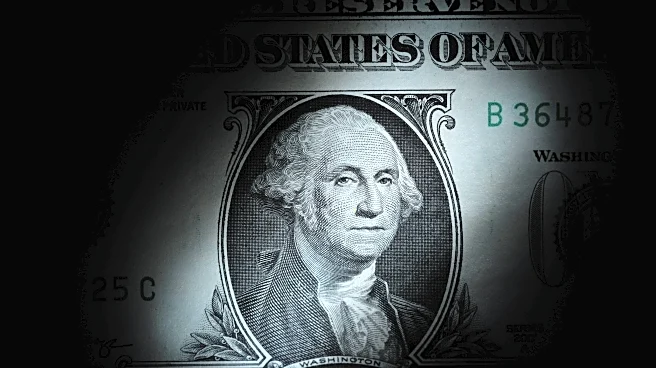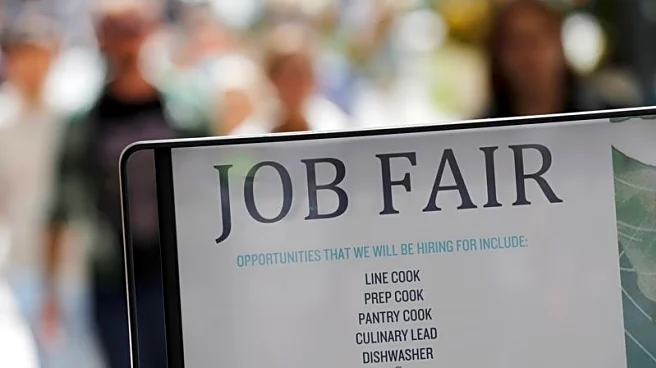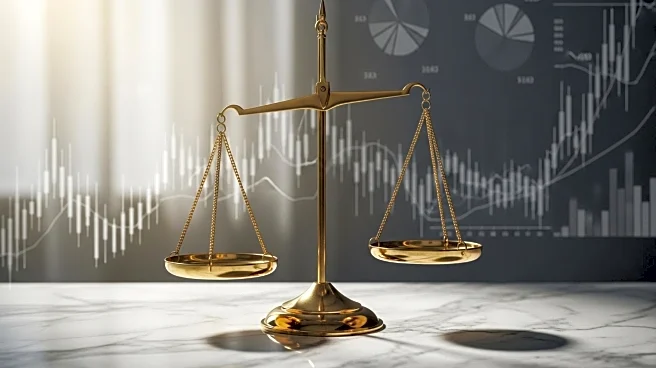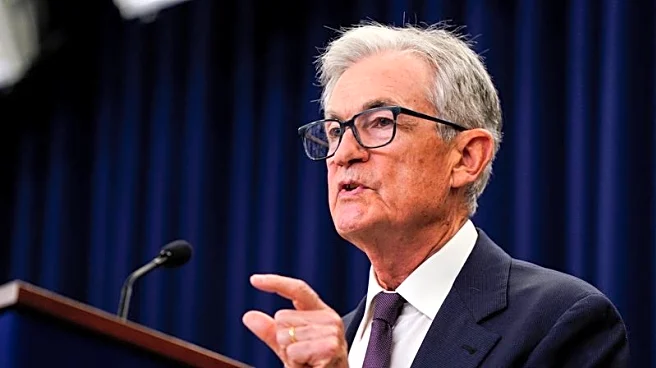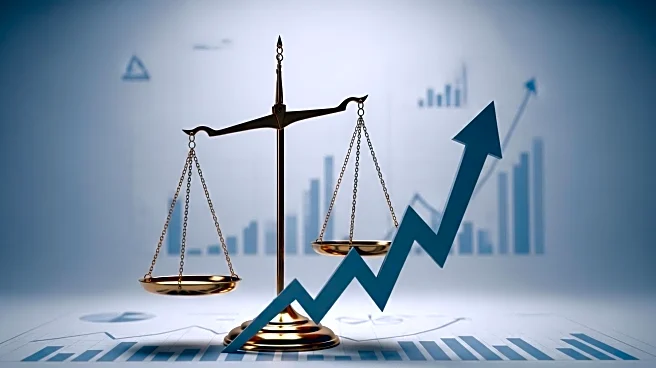What's Happening?
The U.S. economy expanded at a surprising rate of 3.8% from April through June, according to a report by the Commerce Department. This marks a significant upgrade from the previous estimate of 3.3% growth for the second quarter. The rebound follows a 0.6% drop in the first quarter, which was largely attributed to the impact of President Trump's trade policies. The second quarter saw a reversal in import trends, with imports falling at a 29.3% pace, contributing to the growth. Consumer spending also increased, rising at a 2.5% pace compared to 0.6% in the first quarter. Despite the positive growth, private investment fell, including a 5.1% drop in residential investment.
Why It's Important?
The unexpected growth in the U.S. economy during the second quarter is significant as it suggests resilience in consumer spending despite trade uncertainties and stock market fluctuations. The increase in GDP could influence Federal Reserve decisions on interest rates, as the central bank recently cut its benchmark rate to support the job market. However, the strong GDP growth may reduce the need for further rate cuts. The report also highlights the ongoing impact of trade policies, with tariffs potentially affecting business operations and hiring. The labor market has seen a slowdown in job creation, partly due to trade policy uncertainty and previous interest rate hikes.
What's Next?
The Commerce Department's report is the final look at second-quarter growth, with the initial estimate for third-quarter growth expected on October 30. Forecasters anticipate a slowdown in GDP growth to an annual pace of 1.5% in the third quarter. The Labor Department is set to release its employment report on October 3, which may show limited job growth for September. The Federal Reserve's future actions on interest rates will likely be influenced by these economic indicators, as well as ongoing pressure from President Trump for rate cuts.

